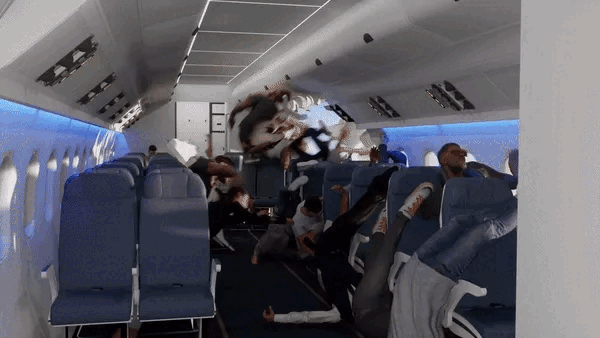When an aircraft encounters turbulence or an in-flight door malfunction, fastening the seatbelt can be a matter of life and death for passengers. The following article explains the types of turbulence that affect flights and why passengers should keep their seatbelts fastened throughout the journey.
“Air Potholes”
In an interview, Captain Nguyen Nam Lien, former Principal of Bay Viet Flight School, stated that air turbulence is a direct threat to passenger safety on every flight.
From the cockpit, pilots can observe storm cloud formations using weather radar, allowing them to evaluate the level of turbulence and decide whether to fly through or around it.

Captain Nguyen Nam Lien has nearly 45 years of flying experience (23,000 flight hours) on various aircraft, from military planes to Airbus and Boeing. (Photo: NVCC).
According to the experienced pilot, the need to keenly watch for these “air potholes” is the reason why pilots are never truly idle, even with autopilot systems in place.
In a situation where the pilot decides to fly through turbulent clouds, passengers will feel the aircraft shake, the seatbelt sign will illuminate, and no one is allowed to leave their seats.
“In many cases of severe turbulence, the crew must immediately suspend the service of food and drinks to passengers. When you hear the captain announce ‘Cockpit speaking, Turbulence! Cabin crew & passengers be seated, fastened,’ it indicates a serious situation. Everyone must return to their seats and fasten their seatbelts,” Captain Nam Lien shared.
If turbulence from storm clouds can be anticipated through radar and pilot skills, “clear air turbulence” is much more dangerous. It cannot be detected by the naked eye or weather radar.
Due to its unpredictability, clear air turbulence can cause sudden jolts or unexpected altitude drops before the crew can even advise passengers to fasten their seatbelts. Worldwide, this type of turbulence has caused numerous injuries to passengers.
In addition to storm cloud turbulence and clear air turbulence, another, less common type of turbulence occurs when a small aircraft flies near a large aircraft. The wake turbulence created by the larger aircraft can cause the smaller aircraft to experience shaking, or even loss of control.
Always Fasten Your Seatbelt Throughout the Flight
During a flight, passengers are required to fasten their seatbelts during takeoff, landing, and when encountering turbulence. Outside of these three situations, the seatbelt sign will turn off, and passengers are allowed to stand up or use the restroom.
According to the head of the Flight Safety Standards Department, current regulations do not mandate that passengers keep their seatbelts fastened throughout the flight. However, Vietnamese airlines uniformly recommend that passengers keep their seatbelts fastened whenever they are seated.

Simulation video of passengers not fastening their seatbelts during turbulence (Source: Ayoub Attache).
“Dear passengers, the aircraft is currently at a stable altitude. If you do not need to leave your seat, please keep your seatbelt fastened throughout the flight,” is the exact announcement made by a Vietnam Airlines flight attendant.
This is not a mere suggestion. According to Pilot Nguyen Nam Lien, it can truly save passengers’ lives in the event of clear air turbulence, or worse, when the aircraft experiences a depressurization event that could suck everything out (loss of cabin pressure).
“You may use the restroom when absolutely necessary. Otherwise, never unbuckle your seatbelt while in flight. If you feel uncomfortable, you can loosen it, but do not remove it completely. The seatbelt is the difference between life and death,” shared the pilot with nearly 45 years of flying experience.


















































